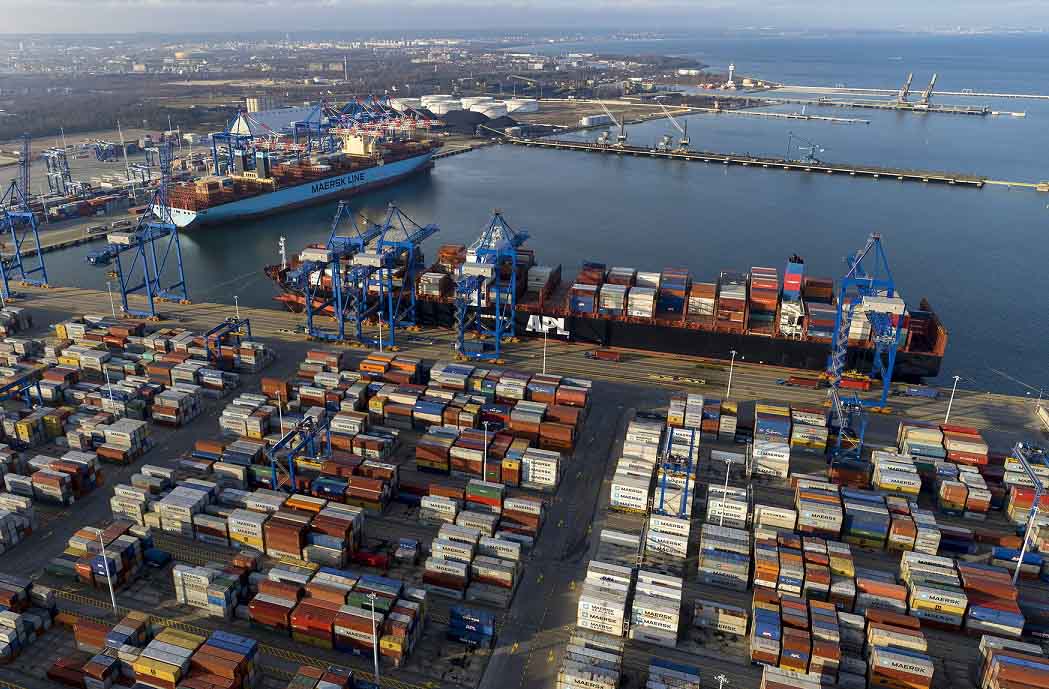A decision by a global shipping leader will affect the Polish Port of Gdańsk, as it plans to redirect its transportation routes to Germany starting next year. This move will result in Gdańsk losing direct container shipments from Asia to the benefit of German ports, shifting the dynamics in the Baltic and North seas.
Danish shipping company Maersk and Germany’s Hapag-Lloyd have agreed on a long-term partnership, signifying a major reshuffling of power in the Baltic Sea. The companies stated that their new strategy is designed to shorten delivery times and enhance flexibility. According to the Money.pl financial news outlet, this will practically halve the connection network, directly affecting Gdańsk’s port.
“Reducing the number of ports in the service line significantly enhances schedule reliability,” said Reiner Horn, Maersk’s representative in Europe. Until now, Gdańsk had been receiving large blue container ships from Maersk coming directly from Asia. Following these changes, Gdańsk will transition to a feeder port, receiving shipments transferred from main ports such as Wilhelmshaven and Bremerhaven in Germany.
As Maersk emphasizes, Gdańsk will remain an important gateway to Europe.
“Göteborg and Aarhus also have their dedicated, very fast, and reliable shuttle services. These three ports (Gdańsk, Göteborg, Aarhus) will remain very important gateways in the Baltic countries for us, serviced by these special and fast shuttle ships. Other Baltic ports will continue to be connected by standard feeder services, like the smaller ports in Sweden, Finland, and Denmark,” assured Rainer Horn.
Poland has significant maritime ambitions, as evidenced by the expansion of the deep-water terminal at the Port of Gdańsk. This expansion has enabled the port to accommodate very large container ships. Plans are underway to increase the port’s throughput capacity to 4.5 million TEUs (twenty-foot equivalent units). Similarly, a new terminal is being developed at the Port of Gdynia to enhance freight capacity.
A strategic move in the works is also the expansion of the port in Świnoujście, where a significant container terminal is set to be constructed, capable of accommodating intercontinental route ships. According to the schedule, the terminal should begin operations in early 2028. Investments exceeding 10 billion zloty (€2.33 billion) are intended to enable it to handle up to 2 million TEUs, competing with German ports.
Currently, the EU considers Hamburg as the primary European transshipment port for the North Sea and Baltic region, with a capacity of 7.7 million TEUs, ranking it as the third-largest port in Europe after Rotterdam and Antwerp.
The battle over Polish container ports continues as Poland seeks access to transoceanic trade and increasingly competes with German ports. German ports have faced challenges in recent years, providing a temporary edge to their Polish rivals.






